Fed Governor Adriana Kugler to resign
Introduction & Market Context
Shopify Inc (NYSE:NASDAQ:SHOP) presented its Q1 2025 investor slides on May 8, 2025, showcasing robust growth across key metrics while highlighting the company’s expanding market opportunity. The e-commerce platform continues to strengthen its position in the global commerce landscape with over 12% US e-commerce market share and operations in more than 175 countries.
The company’s presentation emphasized its evolution from a simple online store platform to a comprehensive commerce operating system, supporting merchants across multiple sales channels including online stores, brick-and-mortar locations, marketplaces, social commerce, and B2B solutions.
As shown in the following snapshot of Shopify’s key metrics, the company has facilitated $1.2 trillion in global commerce since its inception, with 875 million unique online shoppers purchasing from Shopify merchants in 2024:
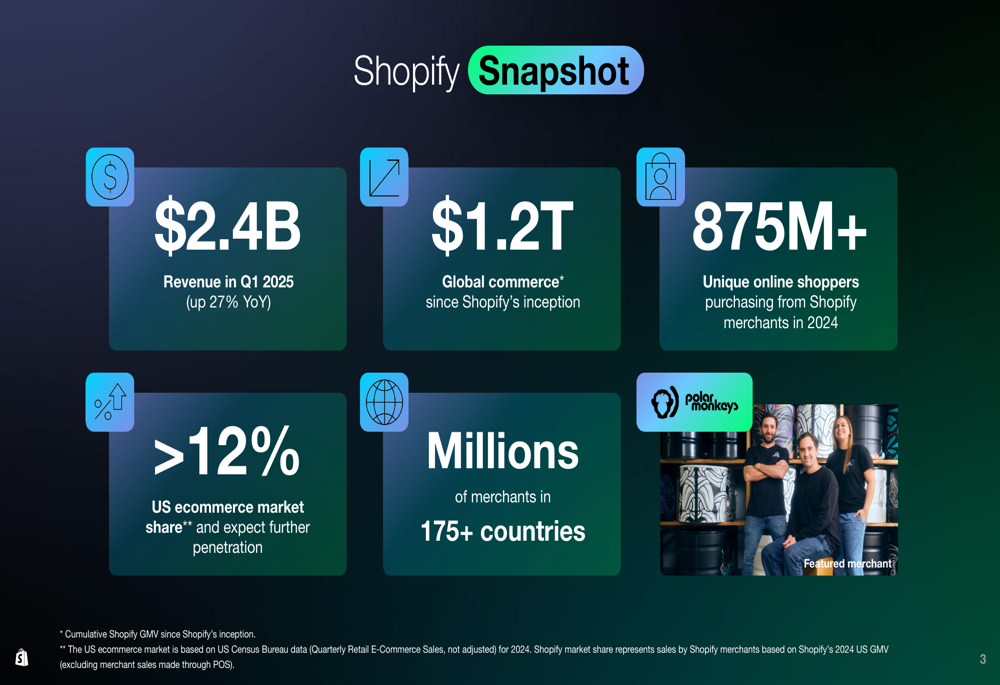
Q1 2025 Financial Highlights
Shopify reported impressive financial results for Q1 2025, with revenue reaching $2.4 billion, up 27% year-over-year from $1.9 billion in Q1 2024. Gross Merchandise Volume (GMV) grew to $74.8 billion, representing a 23% increase compared to the same period last year.
The following chart illustrates Shopify’s consistent GMV and revenue growth trajectory:
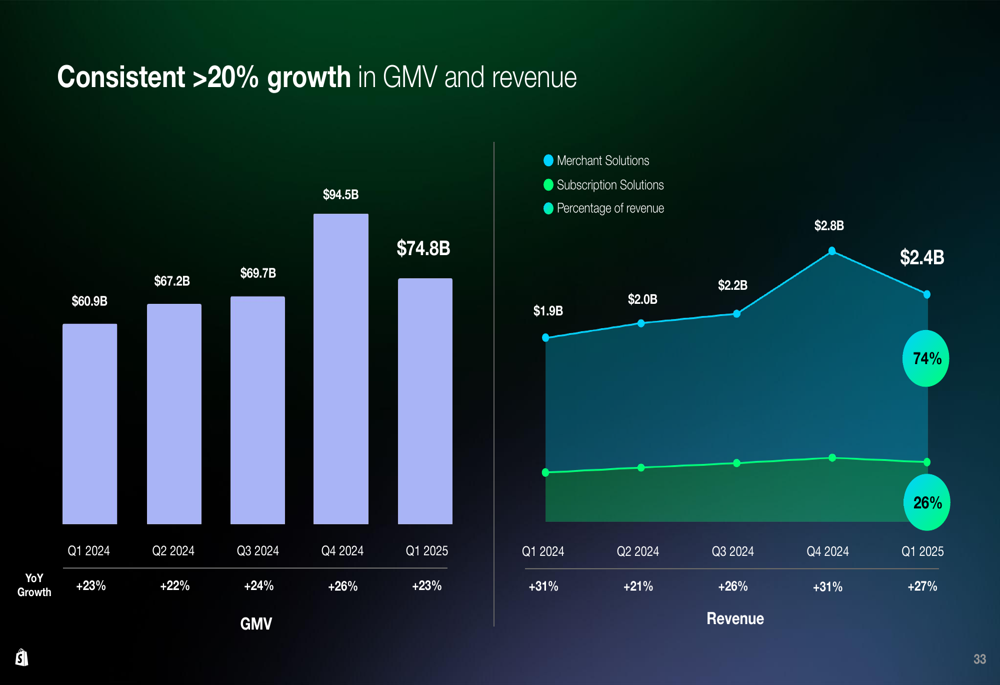
Shopify’s payments business continues to gain traction, with Shopify Payments penetration reaching 64% in Q1 2025, up from 60% in Q1 2024. This translated to $47.5 billion in payment volume, a significant increase from $36.2 billion in the prior year period.
The growing adoption of Shopify Payments is clearly demonstrated in this chart:
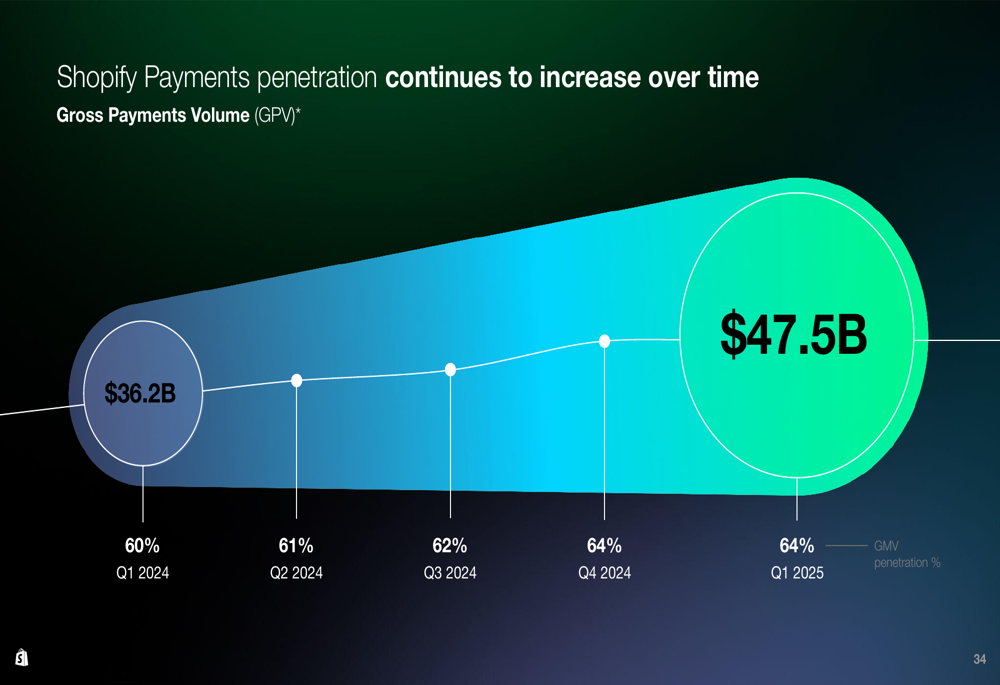
Profitability metrics also showed substantial improvement. Operating income margin expanded to 9% in Q1 2025, up from 5% in Q1 2024, while free cash flow margin reached 15%, compared to 12% in the same period last year.
The following chart shows the consistent expansion in Shopify’s free cash flow margin over recent quarters:
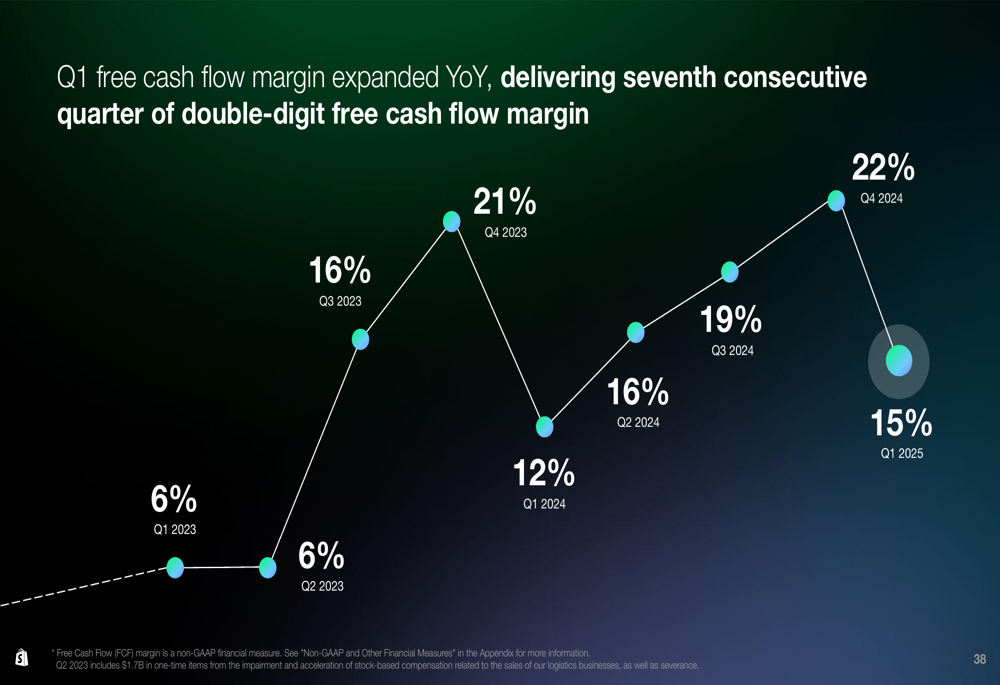
Growth Drivers and Strategic Initiatives
Shopify’s growth strategy centers around multiple vectors including international expansion, offline commerce, enterprise clients, and B2B solutions. The company highlighted that international revenue growth is accelerating, with presence in over 175 countries and expanding payment capabilities across regions.
The global distribution of Shopify’s business is illustrated in this chart:
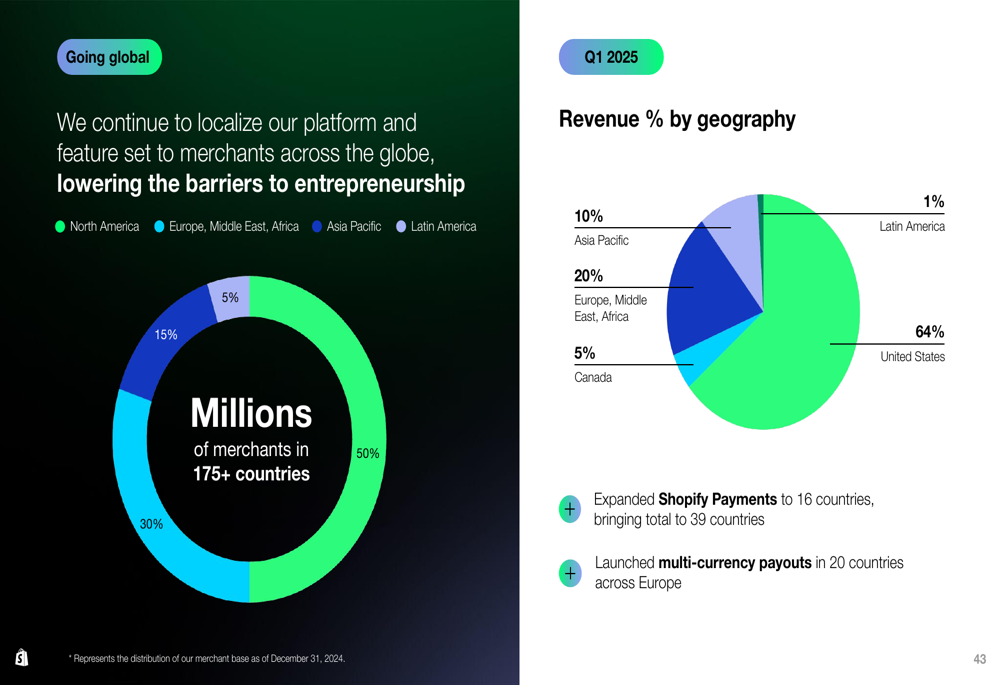
Offline commerce represents another significant growth opportunity for Shopify, with offline GMV growing 23% and cumulative offline GMV exceeding $100 billion. The company continues to gain traction with brick-and-mortar retailers through its point-of-sale solutions.
Shopify’s total addressable market has expanded dramatically from $46 billion in 2015 to $849 billion in 2023, driven by new products, geographic expansion, and serving merchants of all sizes. Despite this growth, the company notes it has only achieved approximately 2% penetration of its addressable market in current geographies.
The expansion of Shopify’s total addressable market is shown in the following chart:

Platform Evolution and Expansion
Shopify has evolved into a unified commerce operating system, offering merchants a comprehensive suite of tools across online and offline channels. The company’s platform now includes solutions for marketing, payments, shipping, cross-border trade, B2B commerce, and back-office operations.
The cohesive nature of Shopify’s platform is illustrated in this overview:
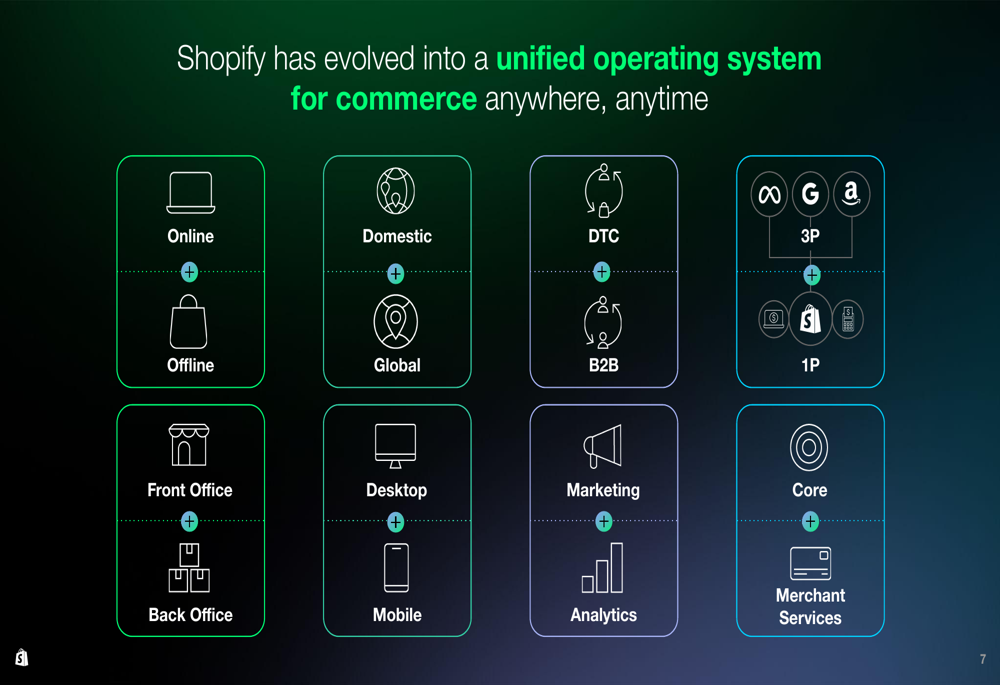
A key strength of Shopify’s business model is the consistent growth of merchant cohorts over time. The Q1 2015 merchant cohort has grown 2.9x with a 12% CAGR, demonstrating the platform’s ability to grow with its merchants.
This pattern of sustained growth across merchant cohorts is shown in the following chart:
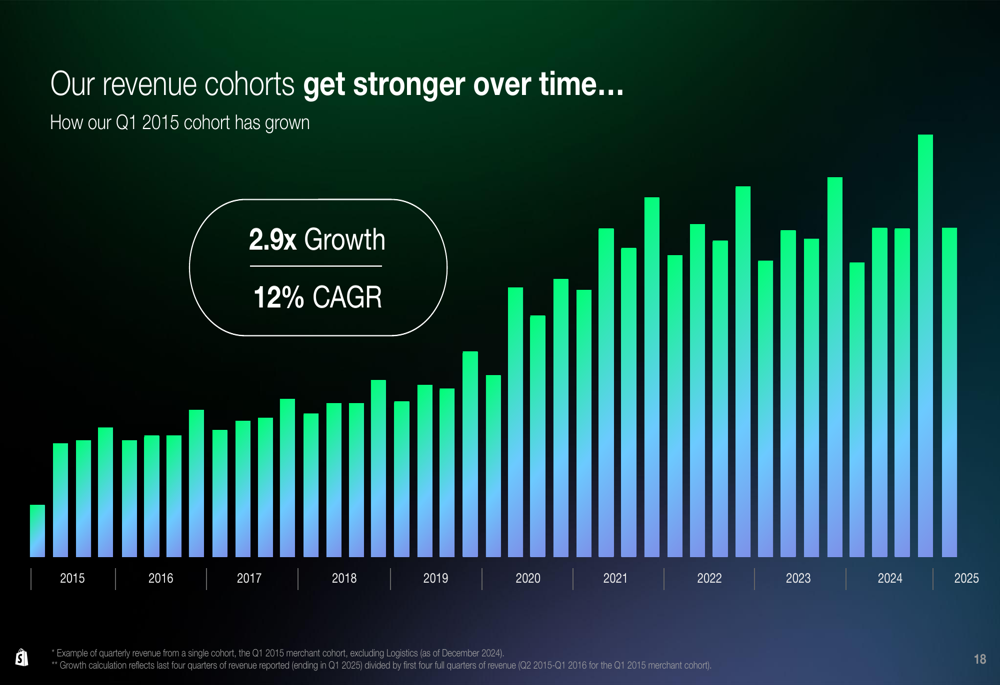
Shopify has also made significant progress in reducing operating expenses as a percentage of revenue, from 51% in Q1 2023 to 36% in Q1 2025, while maintaining investments in key growth areas.
The company’s improving operational efficiency is demonstrated in this chart:

Outlook and Forward Guidance
For Q2 2025, Shopify expects revenue to grow at a mid-twenties percentage rate year-over-year, with gross profit dollars projected to increase at a high-teens percentage rate. The company anticipates stock-based compensation of approximately $120 million and expects free cash flow margin to remain in the mid-teens, similar to Q1 2025.
Shopify’s long-term growth strategy focuses on evolving its product portfolio through five key phases: growing its core merchant base, expanding the types of merchants served, helping merchants grow, monetizing its platform, and continuing to innovate.
The company’s business model profitability has shown consistent improvement, with gross profit growing from $1.5 billion in 2020 to $4.5 billion in 2024, and free cash flow increasing from $383 million to $1.6 billion over the same period.
The following chart illustrates this trend of increasing profitability:
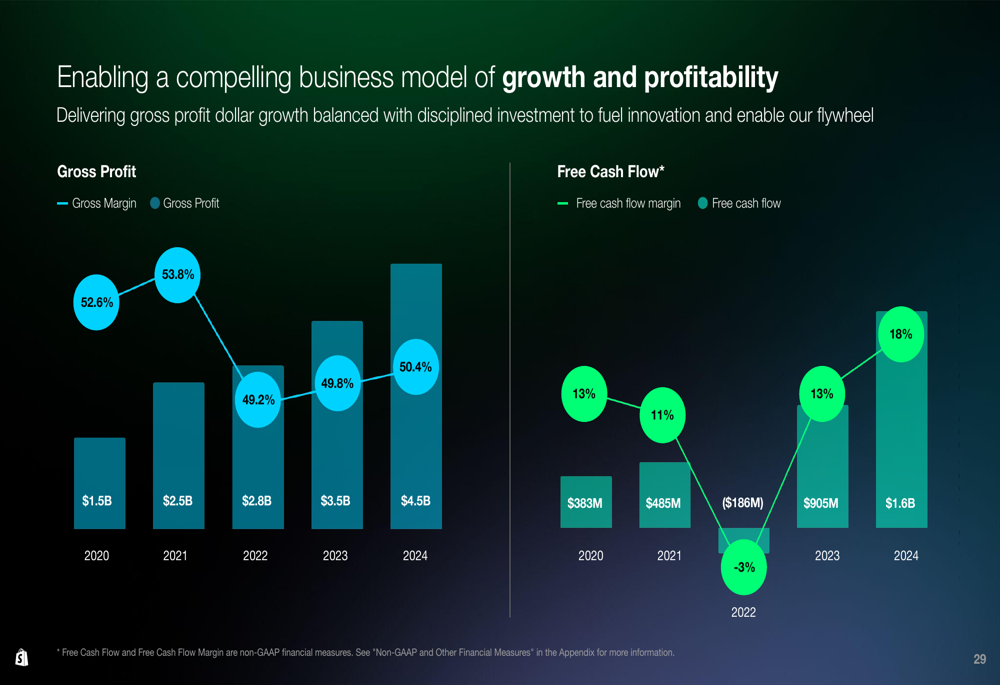
In conclusion, Shopify’s Q1 2025 presentation portrays a company experiencing strong growth across key metrics while simultaneously improving profitability. With multiple growth vectors including international expansion, offline commerce, and enterprise clients, combined with increasing monetization of its platform, Shopify appears well-positioned to continue capturing a growing share of the global commerce market.
Full presentation:
This article was generated with the support of AI and reviewed by an editor. For more information see our T&C.
